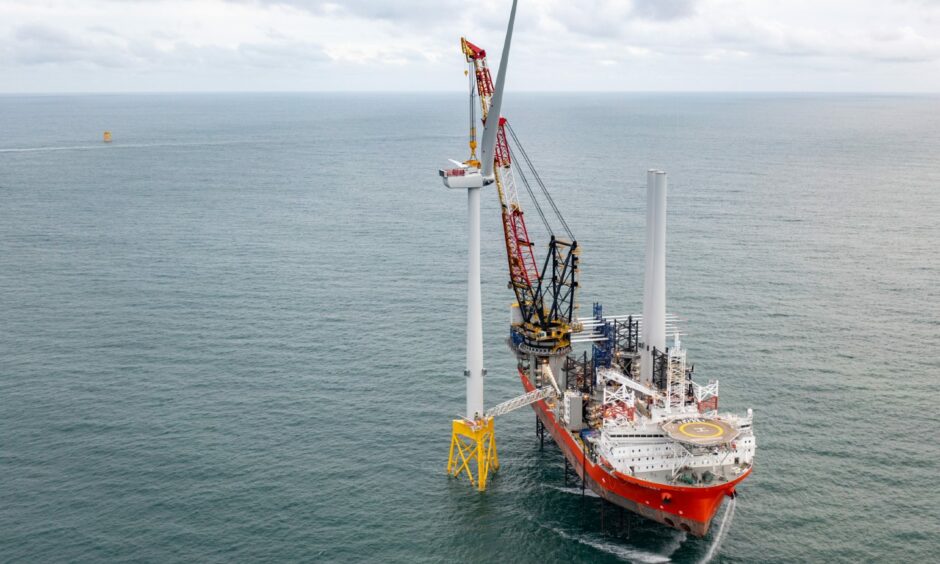Construction of Scotland’s largest windfarm off the Angus coast has reached another milestone.
An enormous jacket weighing more than 5,000 tonnes has been installed at Seagreen, about 17 miles off the Angus coast.
It is to support the project’s offshore substation topside, which is due to be installed early in the new year.
The massive six-legged jacket weighs a colossal 5,100 tonnes – equivalent to the weight of 37 Blue Whales or more than 400 London buses.
The structure was engineered, constructed and installed by Petrofac.
It is now fixed to the seabed, at a water depth of around 55m.
It will play a critical role in safely supporting the offshore substation above the sea during Seagreen’s 25-year operational lifespan.
The jacket has built-in tubing designed to guide the incoming 15 inter-array cables bringing the electricity generated by the turbines to the substation.
In addition, the jacket also has tubing to guide the outgoing three export cables from the offshore substation to the seabed.
When completed in late 2022/early 2023, Seagreen will consist of 114 Vestas V164-10.0 MW turbines, the first of which was installed last week.
The £3 billion wind farm is a joint venture between SSE Renewables and TotalEnergies.
At 1.1GW, Seagreen is Scotland’s largest renewable energy project.
The wind farm will be capable of generating around 5,000 GWh of renewable energy annually.
That is enough clean and sustainable electricity to power more than 1.6m UK homes.
SSE Renewables is leading the development and construction of the Seagreen project and will operate Seagreen on completion.
‘Another significant achievement’
Project director John Hill said: “Hot on the heels of the installation of the first wind turbines comes another significant construction achievement.
“Everyone involved can be justifiably proud of achievements like these.”
He said the milestones “set the foundations for the project.”
Petrofac project director Vipul Sawe was also pleased to be involved.
He said the installation was completed despite the challenges of Storm Arwen and Storm Barra.
Mr Sawe said “several measures” were used to minimise environmental impacts. Those included low hammer energy and acoustic deterrent devices.
The project continues to contribute to the local community.
There is a £1.8m community fund to create a legacy for Angus.
A new long-term operational base is being constructed at at Montrose Port using local contractors, while the project has also created new jobs in the town.













